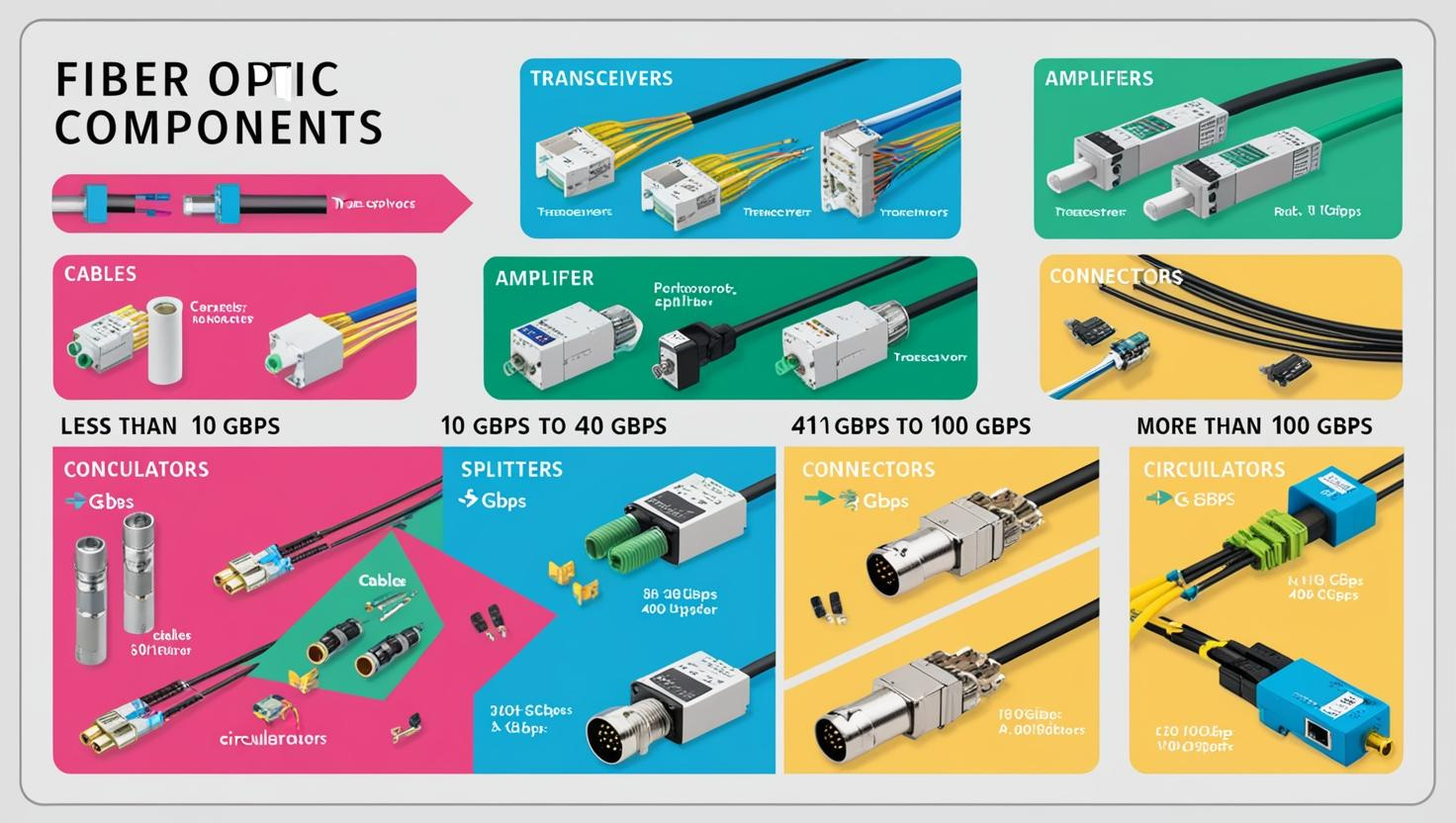The fiber optic components market is expected to grow from USD 36.69 billion in 2025 to USD 58.65 billion by 2030, growing at a CAGR of 9.8% from 2025 to 2030.
The main driving force in this fiber optic components market is a growing demand for high-speed Internet connectivity. Today, businesses as well as households are increasingly switching to digital, and therefore, have a need to rely on such data transmission that may be both accurate and fast requirement that’s demanding tremendous investment in terms of fiber-optic infrastructure to meet it.
Download PDF Brochure @ https://www.marketsandmarkets.com/pdfdownloadNew.asp?id=63775446

In active optical cables, which combine fiber optics with electrical connectors, recent improvements have significantly transformed the fiber optic component market for high-speed data transmission applications. These are highly lightweight and flexible solutions for the connection of short distances while having high bandwidths and low latencies. For instance, 40 Gbps Thunderbolt 3 AOCs are introduced by Sumitomo Electric, among others, in response to ever-increasing demands of cloud computing and data centers, with the hope of rapid data transfer. That is not just about connecting everybody but it also contributes to the fast growth in digital services and transforms business models by allowing more efficient and scalable network infrastructures.
AOC has the significant CAGR due to reliability and secure transportation. AOC cables have primarily replaced the heavier, bulkier copper cables and help offset its other shortcomings. AOCs are commonly used in applications including digital signage, home theaters, security systems, projectors, game consoles, home DVRs, as well as industries such as medical and aerospace and testing companies.An active optical cable (AOC) is used for short-range multilane data communications and interconnects. Usually, the wire transmission of optical communications should belong to the passive part, but AOC is an exception. An AOC consists of multimode optical fibers, fiber optic transceivers, control chips, and modules. It uses electrical-to-optical conversion to improve the speed and distance performance of the cable. Compared with directly attached copper cables for data transmission, AOCs have more advantages; they are lightweight, have high performance, low power consumption, low interconnection loss, electromagnetic induction immunity, and flexibility.
The market in Asia Pacific is expected to register the highest CAGR during the forecast period. The rising industrialization and infrastructural development in this region have offered enormous opportunities for the use of fiber optic components across various applications in APAC. The increasing deployment of data centers in India and South Korea, among others, is also expected to drive the fiber optic components market in these regions. Asia Pacific is one of the emerging markets for fiber optic components. The key countries in Asia Pacific considered for this study are China, Japan, South Korea, and the Rest of Asia Pacific. The Rest of Asia Pacific includes India, Indonesia, Australia, Singapore, and New Zealand. The major drivers for the growth of the fiber optic components market in the Asia Pacific region include the increasing adoption of phones, an increase in the number of Internet users.
The major players in the fiber optic components market are Coherent Corporation (US), Lumentum Holdings Inc. (US), Broadcom Inc. (US), Sumitomo Electric Industries (Japan), Accelink Technologies (China), Amphenol Corporation (US), Acacia Communications, Inc. (US), EMCORE Corporation (US), Fujitsu Optical Components (Japan), and Furukawa Electric (Japan) among others. These players availed themselves of opportunities like indulging in partnerships and acquisitions. Product development and expansion were a few other strategies adopted by companies to strengthen their market position.
